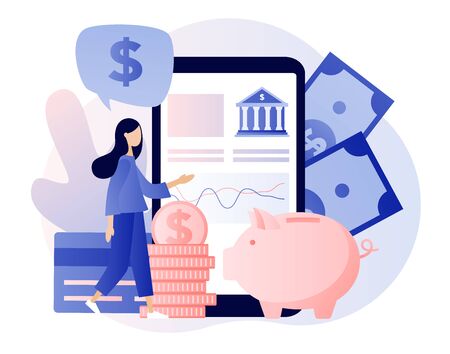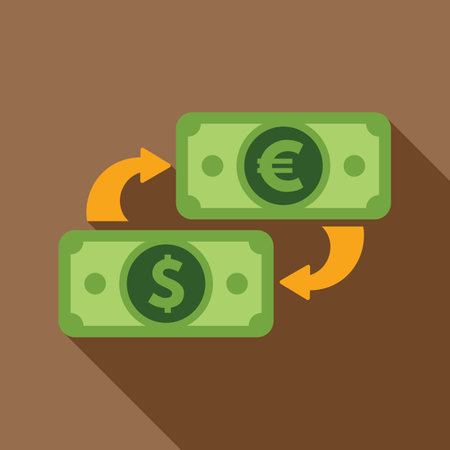Overview of U.S. Mortgage Down Payments
When youre thinking about buying a home in the United States, one of the first financial steps is understanding the down payment. In simple terms, a down payment is the amount of money you pay upfront when purchasing a house. The rest of the home price is usually covered by a mortgage loan from a bank or lender. For most Americans, saving for a down payment is often seen as one of the biggest hurdles to homeownership.
What Is a Down Payment?
A down payment is your initial investment in your new home. It’s typically expressed as a percentage of the homes purchase price. For example, if you buy a $300,000 house and put down 10%, your down payment would be $30,000. The lender then covers the remaining $270,000 through your mortgage loan.
Why Are Down Payments Necessary?
Lenders require down payments for several reasons:
- Reduces Risk for Lenders: By putting your own money into the home, you show lenders that you’re serious and financially invested in the property.
- Protects Homebuyers: A larger down payment means you’ll borrow less money, which can result in lower monthly payments and less interest paid over time.
- Affects Loan Terms: The size of your down payment can impact whether you need private mortgage insurance (PMI) and what interest rate you receive.
Common Down Payment Percentages
| Loan Type | Typical Minimum Down Payment |
|---|---|
| Conventional Loan | 3% – 20% |
| FHA Loan | 3.5% |
| VA Loan (for veterans) | 0% |
| USDA Loan (rural areas) | 0% |
The traditional benchmark for a down payment is 20%. However, many programs now allow buyers to put down less, especially for first-time buyers or those who qualify for government-backed loans.
2. Typical Down Payment Percentages
Common Down Payment Amounts by Loan Type
When buying a home in the U.S., the amount you need for a down payment can vary depending on the type of mortgage you choose. Here’s a breakdown of typical down payment percentages for the most popular loan programs:
| Loan Type | Typical Down Payment | Who Qualifies |
|---|---|---|
| Conventional Loan | 5% – 20% | Most buyers with good credit and steady income |
| FHA Loan | 3.5% | First-time or low-to-moderate income buyers |
| VA Loan | 0% | Eligible veterans and active-duty military members |
| USDA Loan | 0% | Buyers in qualifying rural areas with moderate or low income |
How Lenders Determine Down Payment Requirements
Lenders look at several factors to set down payment requirements:
- Your Credit Score: Higher scores may qualify you for lower down payments.
- Your Debt-to-Income Ratio: If your monthly debts are high compared to your income, lenders may require a bigger down payment.
- The Home’s Price: Some loan programs have limits based on the price of the home you want to buy.
- The Type of Loan: Government-backed loans like FHA, VA, and USDA usually have lower down payment options than conventional loans.
Why These Percentages Matter
The size of your down payment affects more than just your upfront costs. A larger down payment often means:
- You’ll have a smaller loan amount.
- You might get better interest rates.
- You could avoid paying private mortgage insurance (PMI) if you put at least 20% down on a conventional loan.

3. How Down Payment Size Impacts Your Mortgage
Understanding the Role of Your Down Payment
When buying a home in the U.S., the amount you put down as a down payment can make a big difference in your mortgage terms. Let’s break down how different down payment sizes affect your loan, monthly payments, interest rates, and whether you’ll need private mortgage insurance (PMI).
Loan Terms & Monthly Payments
The more you pay upfront, the less you need to borrow. This typically means lower monthly payments. Here’s a simple example:
| Home Price | Down Payment | Loan Amount | Monthly Payment (Estimate) |
|---|---|---|---|
| $300,000 | $9,000 (3%) | $291,000 | $1,850* |
| $300,000 | $60,000 (20%) | $240,000 | $1,525* |
*Estimates based on 30-year fixed-rate mortgage at 6% interest. Taxes and insurance not included.
Interest Rates
Lenders often offer better interest rates if you make a larger down payment. This is because they see you as less risky. A higher down payment can save you thousands over the life of your loan by lowering the total interest you pay.
Typical Down Payment Tiers and Their Impact:
| Down Payment % | Interest Rate Impact |
|---|---|
| 3%-5% | Higher rates likely |
| 10%-15% | Moderate rates |
| 20% or more | Best available rates |
Private Mortgage Insurance (PMI)
If your down payment is less than 20%, most lenders will require PMI. This is an extra monthly cost to protect the lender in case you default on the loan. Once you reach 20% equity in your home, you can usually ask to remove PMI.
PMI Example:
| Down Payment | PMI Required? | Estimated Monthly PMI* |
|---|---|---|
| 5% | Yes | $120-$200 |
| 20% | No | $0 |
*Actual PMI costs depend on loan amount and credit score.
Bigger Down Payment = More Flexibility and Savings
A larger down payment gives you more loan options and negotiating power with lenders. It can also help you avoid extra fees like PMI and get lower interest rates—meaning you’ll pay less overall for your home.
4. Saving Strategies for Your Down Payment
Saving for a down payment is one of the biggest steps in the American homebuying journey. Many first-time buyers wonder how to get started, especially when median home prices and living costs can make saving feel challenging. Here are some practical strategies and cultural tips specifically for U.S. homebuyers to help you build your down payment fund efficiently.
Set a Realistic Savings Goal
Before you start saving, calculate how much you’ll need based on your target home price and desired loan type. In the U.S., conventional loans often require 20% down, but FHA loans can go as low as 3.5%. Use this table to estimate your target:
| Home Price | Down Payment % | Down Payment Amount |
|---|---|---|
| $300,000 | 20% | $60,000 |
| $300,000 | 3.5% | $10,500 |
| $500,000 | 20% | $100,000 |
| $500,000 | 3.5% | $17,500 |
Create a Dedicated Savings Account
Open a separate savings account just for your down payment. Many Americans use high-yield savings accounts or money market accounts to earn more interest while keeping their funds accessible. This also helps avoid the temptation to spend what you’ve saved.
Automate Your Savings
Set up automatic transfers from your checking account to your dedicated savings account every payday. Even small amounts add up over time—consistency is key in American saving culture.
Tip: Try the “Pay Yourself First” Method
Treat your down payment savings like a recurring bill so it’s always a priority in your budget.
Cut Unnecessary Expenses and Increase Income
Take an honest look at your spending habits. Many Americans find opportunities to save by reducing dining out, canceling unused subscriptions, or shopping smarter with coupons and cashback apps. Side gigs like rideshare driving or freelance work are also common ways to boost income for savings goals.
Savings Opportunities Table
| Expense Category | Potential Monthly Savings |
|---|---|
| Coffee Shop Visits (5x/week) | $80–$100 |
| Cable Subscription Cut | $50–$150 |
| Dine Out Less (2x/month) | $60–$120 |
| Side Gig Earnings (Part-Time) | $200–$600+ |
Explore Employer Programs and Gifts from Family
Some American companies offer Employee Assistance Programs (EAP) with financial planning resources or even homebuyer benefits. It’s also common for family members to give monetary gifts towards a down payment—just be sure to document these properly for mortgage approval.
Take Advantage of Government and Local Programs
Many states offer first-time homebuyer programs that include down payment assistance or matching grants. Check with local housing authorities or HUD-approved counseling agencies for options available in your area.
5. Other Costs to Consider Beyond the Down Payment
When buying a home in the U.S., saving for a down payment is just the beginning. There are several other upfront costs that can catch buyers by surprise if they’re not prepared. Let’s break down some of the most common additional expenses you should plan for when purchasing a home.
Closing Costs
Closing costs are fees and expenses you need to pay when finalizing your mortgage and transferring ownership of the property. These typically range from 2% to 5% of your home’s purchase price. Closing costs can include:
- Lender fees (loan origination, application fees)
- Title insurance
- Attorney fees (in some states)
- Escrow fees
- Prepaid property taxes and homeowner’s insurance
Estimated Closing Costs Example
| Home Price | Estimated Closing Costs (2%) | Estimated Closing Costs (5%) |
|---|---|---|
| $300,000 | $6,000 | $15,000 |
| $500,000 | $10,000 | $25,000 |
Appraisal Fees
Your lender will require an appraisal to confirm the market value of the home. This typically costs between $300 and $700, depending on your location and the size of the property.
Inspection Fees
A home inspection isn’t always required but is highly recommended to check for any potential issues with the property. Inspection fees usually range from $300 to $500.
Moving Expenses
Don’t forget about moving costs! Whether you hire professional movers or rent a truck and do it yourself, moving expenses can add up quickly. Here’s a rough idea of what you might expect:
| Type of Move | Estimated Cost Range |
|---|---|
| Local Move (within same city) | $500 – $1,500 |
| Long-Distance Move (out of state) | $2,000 – $7,000+ |
Other Possible Upfront Costs:
- Utility deposits or activation fees
- Immediate repairs or renovations after move-in
- Purchasing new furniture or appliances
Quick Tip:
Add up these extra costs early in your planning so you won’t be caught off guard at closing or during your move. Having a complete budget helps make your home buying journey smoother and less stressful.
